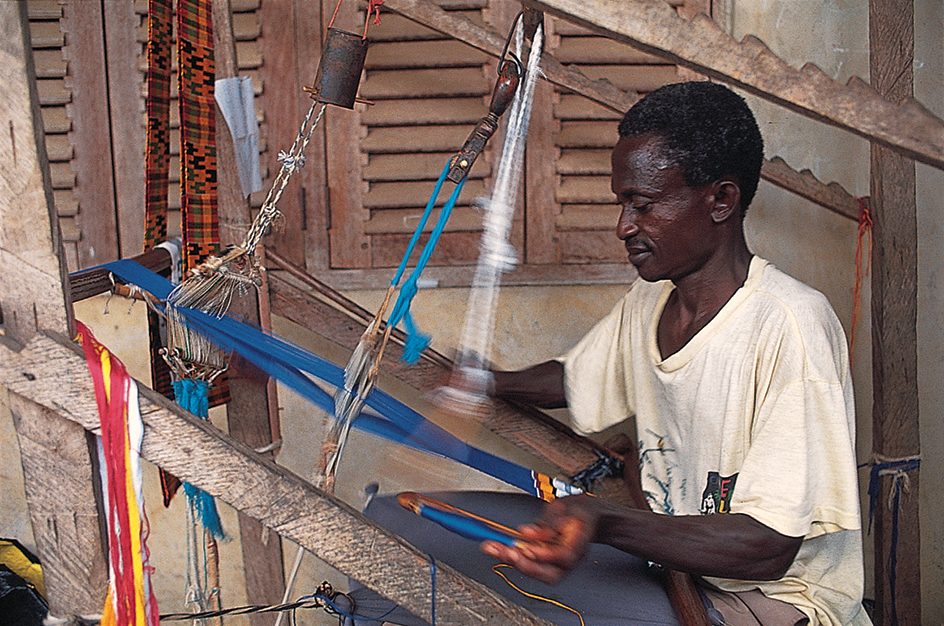Kente, << KEHN tay, >> cloth is a ceremonial cloth made by the Ashanti people of Ghana and the Ewe people of Ghana and Togo. These people wear kente during important social and religious occasions. Garments and accessories of kente cloth have become popular worldwide among people of African descent.
Kente cloth may be made of silk, cotton, rayon, or combinations of these fibers. Metallic threads are sometimes added. The cloths are made in various colors, sizes, and designs. The designs are usually geometric patterns. Or they may be letters, or realistic or stylized representations of plants, animals, and other objects. Each kente pattern has a meaning. For example, a pattern may represent a historic event, a person, or a proverb.
Authentic kente is woven by hand into strips about 4 inches (10 centimeters) wide, which are then sewn together. However, manufacturers print similarly patterned cloth they call “kente” in factories. Items made from kente range from large objects, such as wall hangings and robes, to small accessories, such as belts and scarves.

The term kente probably comes from an Ashanti word meaning woven mat or basket. The first kente weavers used raffia (palm stalk) fibers to weave strips that were then used to make mats or baskets. The Ashanti chief kept close control over the use and distribution of kente patterns. Many early patterns were made exclusively for Ashanti royalty and were not available at village markets.
Several ethnic groups in Ghana and elsewhere in Africa also weave cloths similar to kente. Like the Ashanti, these groups use the cloth during ceremonies.
